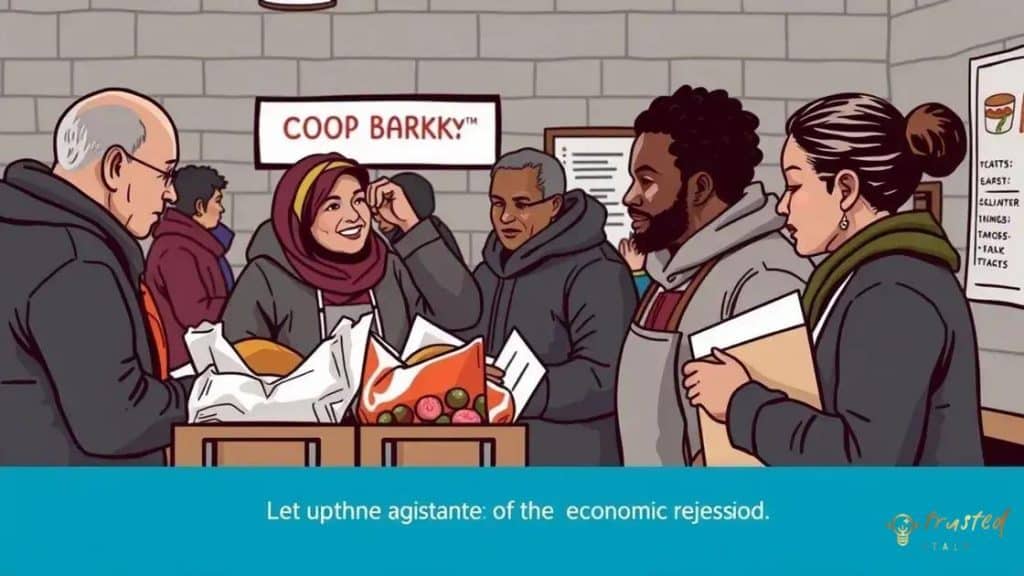The impact of economic recessions on public assistance programs

The impact of economic recessions on public assistance programs leads to increased demand for support as unemployment rises, necessitating policy adjustments to address the challenges faced by vulnerable populations.
The impact of economic recessions on public assistance programs often leads to increased reliance on government support. How do these economic shifts change the landscape of assistance? Let’s dive into the details.
Understanding economic recessions
Understanding economic recessions is crucial for grasping the challenges that arise during tough financial times. These downturns can affect both businesses and individuals significantly.
Economic recessions occur when there is a decline in economic activity, usually defined as a decrease in GDP for two consecutive quarters. During these periods, many people struggle to find jobs, while businesses may face reduced revenue and increased layoffs.
What Causes Economic Recessions?
Several factors can lead to a recession, including:
- High inflation rates, which reduce consumer purchasing power.
- Increased interest rates, making borrowing more expensive.
- Poor consumer confidence, which can lead to decreased spending.
- Global events, such as financial crises or pandemics.
Understanding these causes helps us recognize the impact on public assistance programs. When unemployment rises, more individuals turn to these programs for help.
Effects on the Economy
The effects of economic recessions can ripple through the economy. As more people lose their jobs, the demand for public assistance programs increases. This creates a strain on governmental resources, leading to potential cuts in existing programs.
During recessions, public assistance programs often face higher demand while dealing with limited funding. This scenario challenges the system, requiring careful management to ensure those in need are served.
Additionally, some programs may need to adapt to meet the changing needs of the population. Many people may require food assistance, housing support, or healthcare options during an economic downturn.
Ultimately, understanding economic recessions not only helps identify the immediate impacts on individuals and families but also reveals the broader implications for society as a whole.
Effects on unemployment rates

The effects of economic recessions on unemployment rates are profound and far-reaching. As businesses struggle to stay afloat, many resort to layoffs or reduced hours, increasing the number of unemployed individuals.
When job losses occur, the unemployment rate usually rises sharply. This increase can lead to a cycle of economic decline, as more people without jobs means less spending in the economy.
Immediate Impacts of Rising Unemployment
When the unemployment rate climbs, several immediate impacts can be observed:
- Increased reliance on public assistance programs.
- Reduced consumer spending, leading to further business challenges.
- Heightened stress and anxiety among job seekers.
- Potential for social unrest in affected communities.
These factors combine to create a difficult environment, where public assistance programs are often stretched to their limits. Many families find themselves needing support to make ends meet during these tough times.
Long-Term Effects on Employment
The long-term effects of sustained high unemployment can be damaging. Many individuals may struggle to find suitable employment again, leading to prolonged periods of unemployment, which can harm their skills and employability.
Younger workers entering the job market during a recession may find fewer opportunities and face challenges in establishing their careers. This can lead to a lost generation of workers who may take longer to recover professionally.
Overall, understanding the connection between economic recessions and unemployment rates allows us to see how vital public assistance programs become during these trying times. They provide essential support to those affected, helping to mitigate the impacts of a struggling economy.
Changes in public assistance demand
The changes in public assistance demand during economic recessions highlight how economic factors shape the needs of the population. When people lose their jobs, the need for support increases significantly, forcing many to seek help.
As the economy contracts, there is a noticeable shift in the types of assistance people require. For instance, food assistance programs may see a surge in applications as families struggle to put meals on the table. Similarly, healthcare programs can experience increasing demand as individuals lose employer-sponsored insurance.
Types of Public Assistance Affected
Several types of public assistance programs react differently during economic downturns:
- Food stamps: Applications for food assistance often increase substantially during recessions.
- Unemployment benefits: More individuals qualify for unemployment benefits as job losses mount.
- Housing support: Families may seek help with rent or mortgage payments due to reduced income.
- Healthcare services: Medicaid enrollment typically rises as people become uninsured.
These shifts in demand can strain resources, leading to longer wait times for assistance programs. Public agencies may face challenges in meeting the heightened need for services, which can leave many without timely support.
Additionally, demand can vary by region as different areas experience unique economic challenges. Urban centers may see more significant spikes in need due to higher populations and unemployment rates compared to rural areas.
Understanding how demand changes helps inform policy decisions and resource allocation for public assistance programs. By recognizing patterns, agencies can better prepare and adjust their services to meet the evolving needs of communities during tough economic times.
Policy adjustments during downturns

Policy adjustments during economic downturns are crucial for effectively responding to the needs of the population. As public assistance programs face increased demand, governments often implement changes to better support those affected.
In challenging economic times, policies may shift to increase funding and expand access to essential services. For example, governments might raise the income eligibility limits for programs to assist more families in need.
Types of Policy Adjustments
Several common adjustments can occur during downturns, including:
- Emergency relief measures: Temporary programs may be introduced to provide direct financial aid to those who have lost their jobs.
- Streamlined application processes: Reducing bureaucratic hurdles makes it easier for individuals to access assistance quickly.
- Increased benefit amounts: Enhancements in benefits help cover rising costs of living during tough economic periods.
- Expanded eligibility: Lowering barriers for access means more people can benefit from available programs.
These adjustments are designed to alleviate some of the pressures that families face. As more individuals apply for assistance, governments must adapt their systems to meet the growing needs efficiently.
Additionally, collaboration between federal and local governments becomes vital during downturns. Local agencies often play a pivotal role in delivering assistance directly to those in need. By providing clear communication and resources, these agencies can help communities thrive, even when faced with economic challenges.
Ultimately, timely policy adjustments ensure that public assistance programs remain responsive and effective, supporting vulnerable populations during critical times.
Long-term implications for vulnerable populations
The long-term implications for vulnerable populations during economic recessions can be significant and far-reaching. As these populations often rely heavily on public assistance programs, any changes in the economy can drastically affect their livelihoods.
When economic downturns hit, vulnerable groups such as low-income families, unemployed individuals, and people with disabilities often face even greater challenges. They may experience long-term job loss, making it difficult to regain financial stability.
Education and Skill Development
One crucial area impacted is education and skill development. Prolonged unemployment can lead to gaps in skills, making it harder for individuals to secure future employment. Students from low-income families may also miss educational opportunities as resources are stretched thin.
- Access to training programs: Many might find it difficult to enroll in vocational training or further education.
- Community resources: Local programs often face funding cuts, further reducing support options.
- Generational impact: Children in these households may grow up with fewer opportunities, perpetuating the cycle of poverty.
Health outcomes can also deteriorate for vulnerable populations. Without access to adequate healthcare, many individuals may struggle with chronic health issues that worsen over time. The stress of financial instability can lead to mental health challenges as well.
Social Stability and Community Cohesion
Long-term economic challenges can erode social stability and community cohesion. As more people face financial hardships, social tensions may rise, leading to feelings of isolation or anger towards the system. In some cases, these feelings can escalate into social unrest.
Additionally, vulnerable populations may become less engaged in their communities as they focus on mere survival. This disengagement can weaken community bonds, making it harder for people to come together for collective action or support.
Ultimately, addressing the long-term implications for vulnerable populations during economic recessions requires thoughtful policy responses. Ensuring sustainable access to public assistance and other support systems is vital for breaking the cycle of poverty and fostering resilience.
FAQ – Frequently Asked Questions about the Impact of Economic Recessions on Public Assistance Programs
What are the main effects of economic recessions on public assistance programs?
During economic recessions, public assistance programs often see an increase in demand as more individuals lose jobs and require support.
How do policy adjustments help during economic downturns?
Policy adjustments allow governments to increase funding and eligibility for assistance programs, making it easier for those in need to access help.
What challenges do vulnerable populations face during recessions?
Vulnerable populations often experience job loss, reduced access to education, and deteriorating health outcomes, making it hard to regain stability.
Why is community support important during economic downturns?
Community support helps strengthen networks among individuals in need, promoting resilience and providing essential resources during tough times.